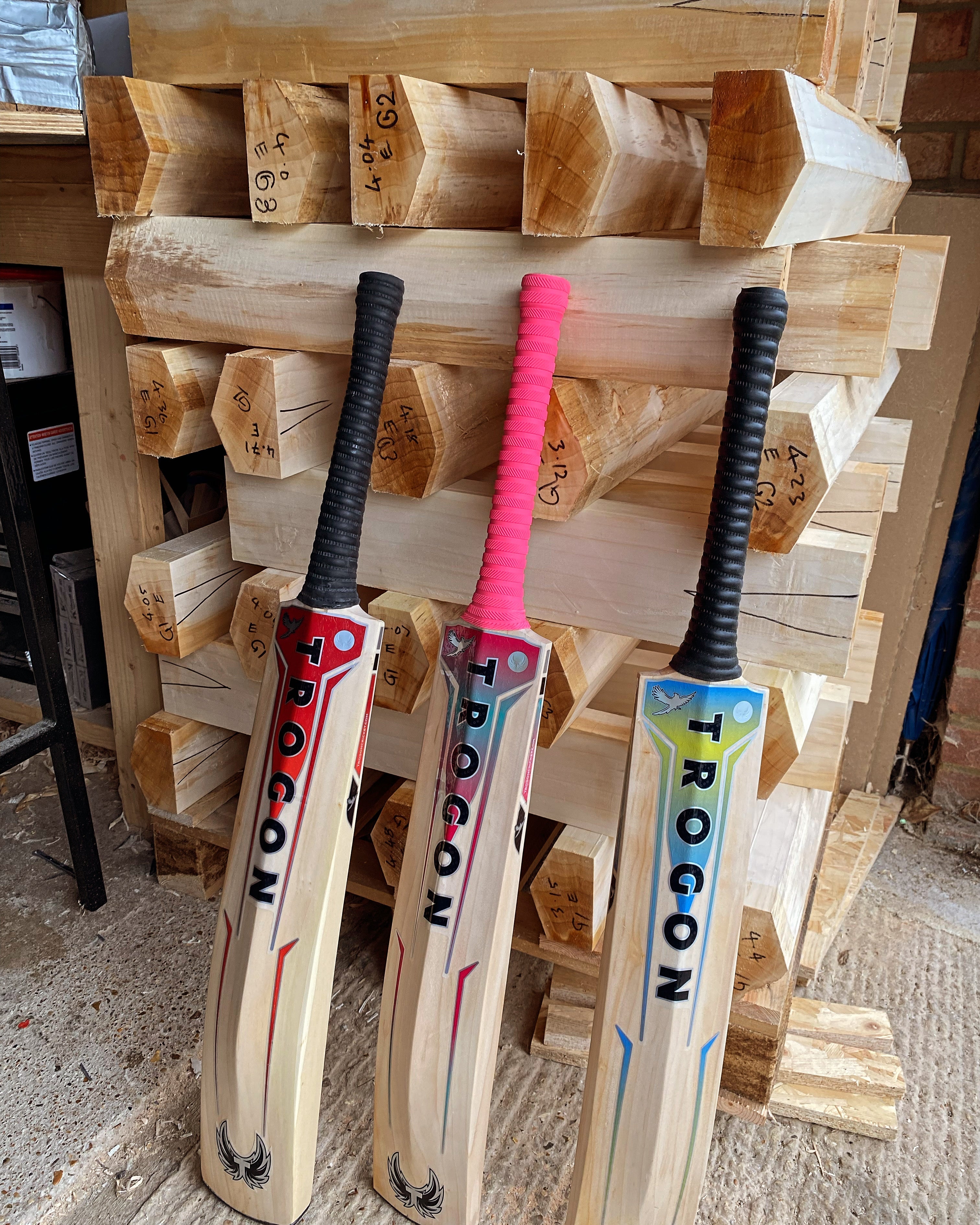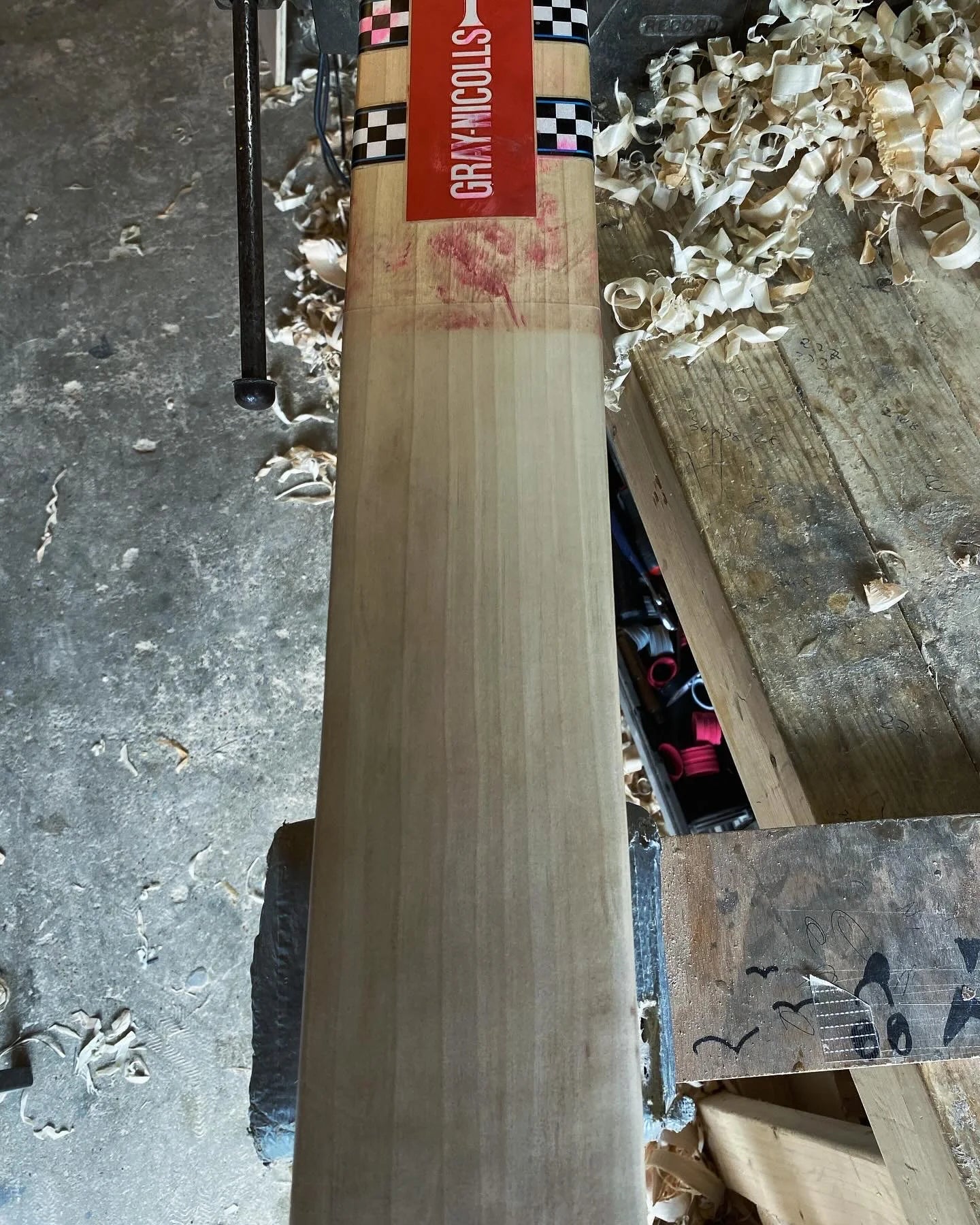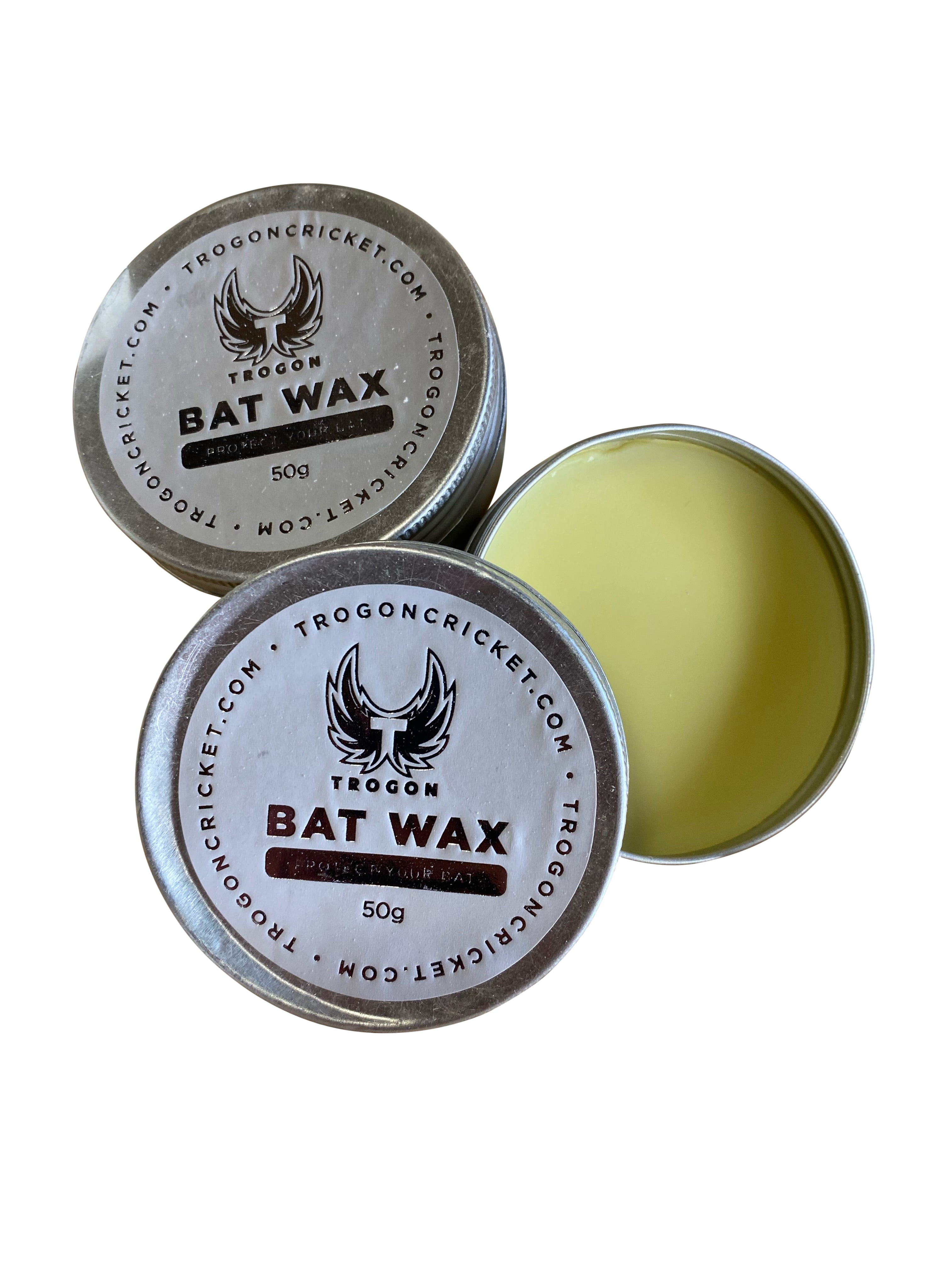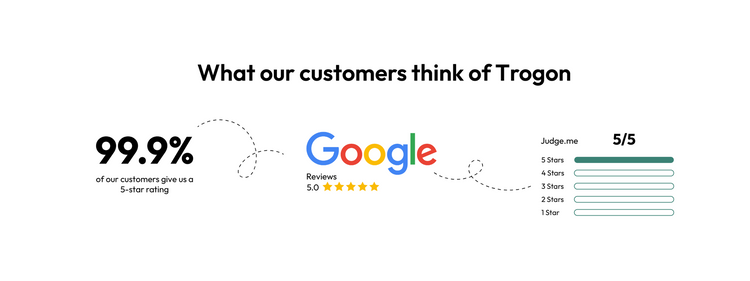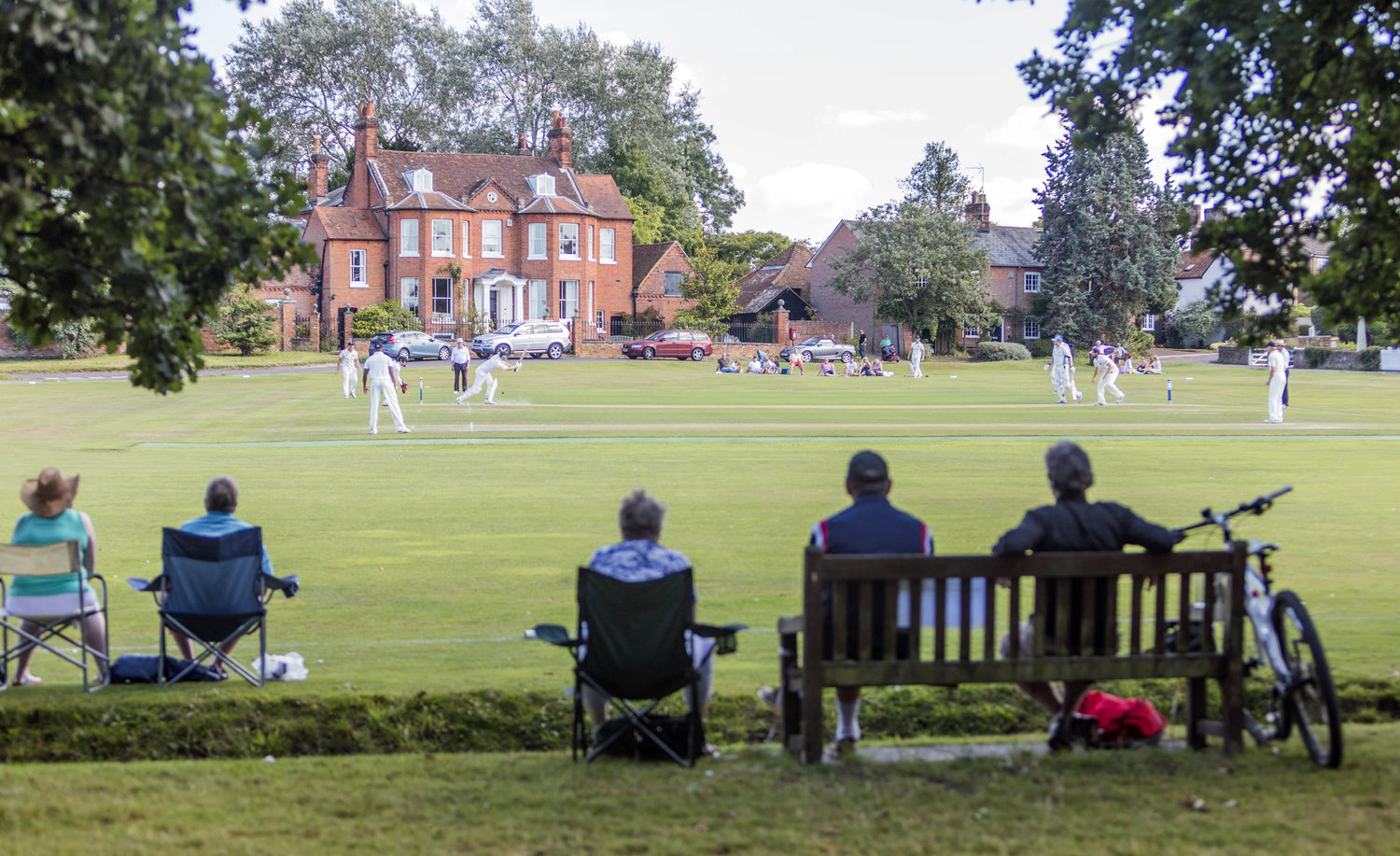An essential aspect of a cricket bat's durability and performance is its handle, which, when crafted correctly, can significantly enhance a player's game.
But apart from being the key element to holding the bat, why are handles so important?
Cricket bat binding is crucial as it reinforces the handle, ensuring stability and strength. This process involves wrapping the handle with a twine, typically after applying PVC glue, to secure the cane pieces to the bat around the taps, at the top of the splice. Proper binding enhances the bat's durability and aids in shock absorption, significantly impacting the player's performance and comfort.
In this post, we delve into the process of cricket bat binding, a simple yet crucial part of cricket bat manufacturing, from junior cricket bats to cricket bats for adults.
But first, let's have a deeper look at bat handles.
Understanding Cricket Bat Handles
The handle of a cricket bat is not just a stick attached to the flat blade; it is a complex structure that provides flexibility, grip, and balance.
All handles at Trogon Cricket are made from Singapore cane, renowned for its strength and elasticity, and we offer several different options.
We offer three handle options:
4-piece, 9-piece, and 12-piece, each crafted to cater to different playing styles and preferences.
- Our 4-piece handles are used for grades 3 & 4 and kids' bats.
- Our 9-piece are used for grade 2 cricket bats
- Our 12 piece are used for grade 1 + player grade and for all custom made cricket bats.
The pieces in these handles are strategically combined with rubber inserts. These rubber inserts play a crucial role in dampening the vibrations generated when the bat strikes the ball, providing a more comfortable grip and reducing the risk of jarring in the hands.
The number of pieces in a handle also affects its flexibility and shock absorption, with higher piece counts generally offering more flex and better vibration absorption.
This customisation in the handle construction ensures that every cricketer can find a bat that feels just right, enhancing their control and confidence at the crease.
Comprising the above, these canes are joined to form the core of the cricket bat handle. The construction of these handles is a testament to the intricate craftsmanship that goes into making custom-made cricket bats.
Why Do Cricket Bats Have Cane Handles?
Cane is used in cricket bat handles because it offers the perfect blend of strength, flexibility, and shock absorption.
When the ball strikes the blade, the handle must absorb significant vibration to protect the batter's hands and maintain control. Cane naturally compresses and flexes, dissipating impact forces far better than any hardwood. This makes it the ideal material for the high-speed, high-impact nature of cricket.
The use of cane also enhances comfort and feel, allowing players to control the bat with precision. Modern handle construction often combines cane with rubber and composite inserts, but cane remains the essential core because nothing else delivers the same natural elasticity and durability.
What Does a Cricket Bat Handle Actually Do?
The handle is responsible for far more than simply allowing a batter to hold the bat. It plays a vital role in performance, controlling how the bat feels, responds, and behaves during play. A good handle absorbs shock, reduces vibration, and ensures that the player does not feel jarring in the hands when the ball hits the bat.
The handle also determines how the bat transfers energy. A well-constructed handle improves control, enhances timing, and helps maintain a fluid swing. Without the right handle, even the finest cricket blade will not perform to its full potential.
Types of Cricket Bat Handles
Cricket bat handles come in different shapes and constructions, each designed to suit different playing styles. While the number of pieces (4, 9, 12) affects flexibility and shock absorption, the shape of the handle influences grip, control, and wrist movement.
H3: Main Handle Shapes
-
Round Handles – ideal for bottom-hand dominant players who like freedom in the wrists.

-
Oval Handles – provide better alignment and more control for top-hand dominant players.

-
Semi-Oval Handles – a blend of both, offering stability with enough freedom for aggressive stroke play.

These shapes work alongside the handle's internal construction to give each bat its unique feel.
What Is a Semi-Oval Handle?
A semi-oval handle is a hybrid shape that offers the stability of an oval handle while retaining some of the natural freedom of a round handle. The slight flattening on one side improves alignment of the bottom hand, giving players better control when playing straight-bat shots.
At the same time, the round underside allows smooth wrist motion, particularly useful for players who switch between attacking and defensive play. This is the shape chosen by many modern batters because it offers balance, comfort, and control.
Difference Between Round and Oval Handles
Round and oval handles create very different batting experiences. A round handle allows maximum wrist mobility, making it ideal for players who rely on aggressive stroke play, flicks off the pads, and bottom-hand power.
On the other hand, an oval handle encourages proper top-hand position, helping players play straighter and with more control.
Oval handles are also more stable during impact, reducing unwanted rotation in the hands.
Which Handle Is Best for a Cricket Bat?
The best handle depends entirely on the player’s technique and grip.
For example, players who favour controlled, classical shots often prefer semi-oval or oval handles because they improve alignment and stability. Meanwhile, aggressive players who rely heavily on the bottom hand usually favour round handles that offer greater freedom - but it's completely subjective and not an ideal science.
At Trogon Cricket, we match handle shape to a player's batting style, ensuring that the bat not only feels right but also supports their natural technique. No single handle is “best”, but the best one is the one that suits your game.
Which Handle Is Best for Bottom-Hand Players?
Players who use the bottom hand more heavily often benefit from a semi-oval handle. This shape allows full wrist rotation, making it easier to play flicks, slog sweeps, and aggressive shots across the line.
A semi-oval handle can also suit bottom-hand players who want more stability without restricting movement. The key is maintaining wrist freedom while preserving comfort and control during impact.
Does the Handle Affect Pickup?
Yes, the handle significantly affects pickup. The balance, weight distribution, and feel of a bat are influenced just as much by the handle as by the blade.
A lighter, more flexible handle can make a bat feel 1–2oz lighter than it actually is, simply because it improves weight distribution.
Handle shape and construction also affect how quickly the bat comes through the swing arc. This is why two bats that weigh the same can feel completely different in the hands.
Does the Handle Affect Power?
The handle directly affects how much power is transferred into the ball. A slightly stiffer handle offers a cleaner, more direct energy transfer, which benefits players looking for strong, powerful shots. A more flexible handle absorbs more vibration, improving comfort but reducing some of the raw hitting power.
Piece count also matters; 12-piece handles provide more flex and shock absorption, while 4-piece handles are typically stiffer. A player’s ideal handle depends on their technique, strength, and preferred style of play.
Can You Replace a Cricket Bat Handle?
Yes, a cricket bat handle can be replaced entirely. This is known as rehandling, and it involves removing the damaged handle, fitting a new cane handle, and re-binding it. A properly done rehandle will restore the bat to its original strength and performance.
At Trogon Cricket, we rehandle bats using the same traditional methods used in new bat manufacture, ensuring perfect alignment, stability, and feel.
How Do You Know if Your Bat Needs Rehandling?
A bat may need rehandling if the handle feels loose, rotates inside the splice, or makes a clicking sound on impact. Visible splits or cracks in the handle are also clear signs. Another standard indicator is a soft or “dead” feeling when striking the ball, as the internal cane may have deteriorated.
Players often feel the problem before they see it. If the bat suddenly doesn’t feel right in the hands, the handle may be the cause.
What Causes a Cricket Bat Handle to Break?
A cricket bat handle can break for several reasons. Repeated impact over time can cause the internal cane to fatigue and split. Temperature changes, moisture, and improper storage can also weaken the handle. Mis-hits high on the splice or excessive bottom-hand force can contribute to breakage.
Lower-quality cane or poorly constructed handles tend to fail sooner, which is why Trogon Cricket uses premium Singapore cane for maximum strength and longevity.
Which Handle Provides the Best Control?
For players seeking maximum control, oval and semi-oval handles are usually the best options. The flattened edge helps align the top hand, improving stability and reducing the risk of over-reliance on the bottom hand. This leads to straighter bat swings, improved timing, and more consistent shot execution.
Players with classical techniques often choose these shapes because they promote correct hand positioning throughout the swing.
Again, very subjective and down to each player.
The Role of Cricket Bat Binding
Once the handle is crafted and inserted into the cricket bat, the next step is the cricket bat binding process. This involves applying PVC glue to the handle, followed by tightly wrapping a binding material around it in a single layer.
This binding runs along the entire length of the handle, offering much-needed stability and strength.
The role of the binding is not just decorative; it plays a crucial part in maintaining the structural integrity of the bat, especially during the high-impact action of hitting a cricket ball.

As mentioned above, the binding of the handle is a crucial element of cricket bat-making. The above image shows me using our custom-made binding lathe. First, the bat is securely fitted, then glue is added to the handle, and then the binding is wrapped all the way down the handle.

The above image shows the raw cricket bat and the joint between the handle and the blade, known as the splice, but also 'tabs'; these are the parts of the blade that run up the handle. When binding the handle, we make sure that the binding is super-tight around the tabs. We then apply CA glue to the area to provide additional strength.

We have different sizes of twine that we use on our handles, but the main binding is shown in the above image.
Maintenance and Rehandling
Over time, due to regular use and wear, the binding at the base of the handle may loosen. This is a common issue, but one that needs attention. Some cricketers resort to using tape to secure the binding, which can be an effective temporary fix.
However, for a more permanent solution, cricket bat rehandling involves adding some PVC glue and re-glueing the end of the binding. This simple fix can significantly extend the life of your cricket bat.
Customisation and Variety
At Trogon Cricket, we understand that every cricketer has unique needs and preferences. That's why we specialise in custom-made cricket bats.
Our bats are handcrafted to suit a wide range of shapes, sizes, and weights, ensuring that every player's personal requirements are met.
Whether you're a seasoned professional or a budding enthusiast, our range of cricket bats made in West Sussex offers something for everyone.
Affordable Quality
We believe that quality shouldn't come at an unaffordable price. Our range of cricket bats made in West Sussex includes options in different willows, catering to all budgets without compromising on quality.
Whether you're looking for a bat for professional play or leisure, our collection is designed to meet the diverse needs of cricketers everywhere.
I’m just starting out. Which bat is easier to use against spin, the light one or the heavy one?
Conclusion
In conclusion, the process of cricket bat binding might seem minor in the grand scheme of cricket bat manufacturing. Still, its impact on the performance and longevity of a bat cannot be overstated.
At Trogon Cricket, we take pride in offering custom-made cricket bats that cater to every cricketer's unique needs.
Whether you require cricket bat rehandling services or are in search of a new bat that fits your style and budget, our cricket bats made in West Sussex are a testament to our commitment to quality and craftsmanship.
Remember, a well-bound cricket bat handle is not just an accessory; it's a necessity for every serious cricketer.
Playing Our Part in Your Cricket Story
We know that cricket is more than just a game; it’s a passion, a community, and a lifetime of memories. That’s why every Trogon bat is made with care, dedication, and pride. We see our role as more than just bat makers; we’re part of your cricket journey.
From the first knock in the nets to the biggest innings of your career, we want to be there with you.
Choosing Trogon means choosing a bat made with honesty, integrity, and the same love for the game that you carry to the crease.
Trogon Product Guarantee
When you buy from Trogon, you’re covered by our 6-month bat guarantee. If your bat cracks or breaks within that period and has been knocked in correctly, we’ll replace it with a new one, simple, fast, and hassle-free. Combine that with your statutory online protections, and you can shop with total peace of mind.








